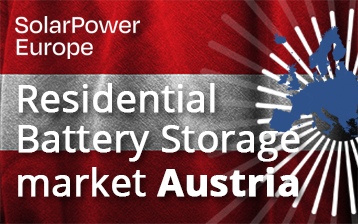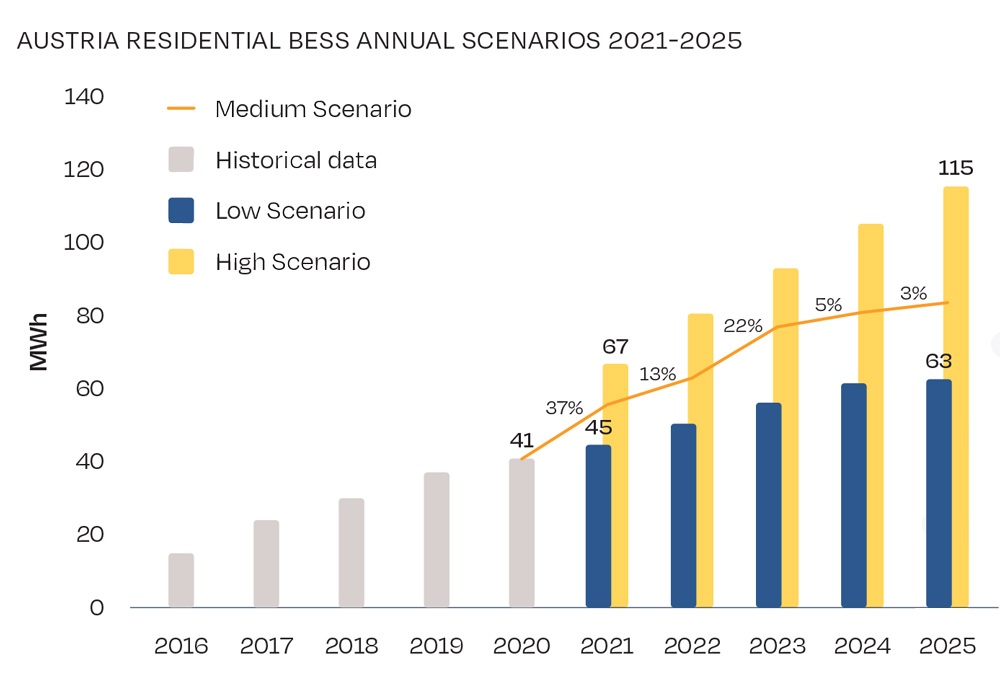Austria is the fourth largest residential storage system market in Europe according to Solar Power Europe’s European Market Outlook For Residential Battery Storage 2021–2025.
Started in 2015, it began to have a weight in the country starting in 2018 when the Austrian federal government started to incentivize it.
According to the data available to this sector association, at the end of 2020 the cumulative reached 161 MWh, of which about a quarter installed precisely in that year or 41 MWh with an increase of 10% on the previous year.
The forecasts for 2021, also thanks to the renewal of the subsidy until 2023, are to have an increase of 37% which corresponds to 56 MWh. Thanks to this federal incentive, there will certainly be further growth for the next 2 years.
Photovoltaic systems with incentives since 2012
The Austrian government began to support the installation of PV systems as early as 2012 through a mixed scheme between capital grant and feed-in-tariff incentives, where the first was valid for a plant up to 5 kW, meanwhile the feed-in-tarif for plants from 5 to 200 kW, as in almost all of Europe.
This incentive scheme has allowed the installation of about 50 MWp of plants every year from 2013 to 2017.
From 2018, the PV + BEES combination has been encouraged
Thanks to the upward shift of the Austrian government’s targets on renewables and the adoption of a new financing scheme from 2018, the combined photovoltaic system with attached storage was financed up to 45%. In addition to this, local incentives are available in some regions.
In this way, according to Solar Power Europe, 24 MWh were installed in 2017, 30 MWh in 2018, 37 MWh in 2019 and the latest certain data reported for 2020 41 MWh installed with an average growth in the 2017-2020 four-year period of 19% YOY.
From the studies carried out in the European Market Outlook For Residential Battery Storage 2021-2025 as in many other states, the difference between the cost of energy and the incentive rate has increased, causing the coupling rate of the storage during the installation of the system photovoltaic increased.
In addition to this, the adoption of smart meters which is expected to end between 2022 and 2024 will allow various energy providers to study ad-hoc tariffs for owners of PV + BESS systems.
By 2030, the Austrian government would like to achieve 100% electricity from renewable sources.
The Renewable Expansion Act (EAG) introduced in July 2021 favors the creation of energy communities, calming the costs of connecting to the grid and aims to achieve 11 TWh/year from PV.
Good growth of storage systems in the coming years
Solar Power Europe’s forecasts for Austria in conclusion point to good growth until 2023, the year in which the incentive for BESS systems should end at the moment, but which will in any case lead to Austria having a cumulative capacity of 521 MWh to 2025, therefore more than triple, overall the overall capacity by 2020 which was 161 MWh.







